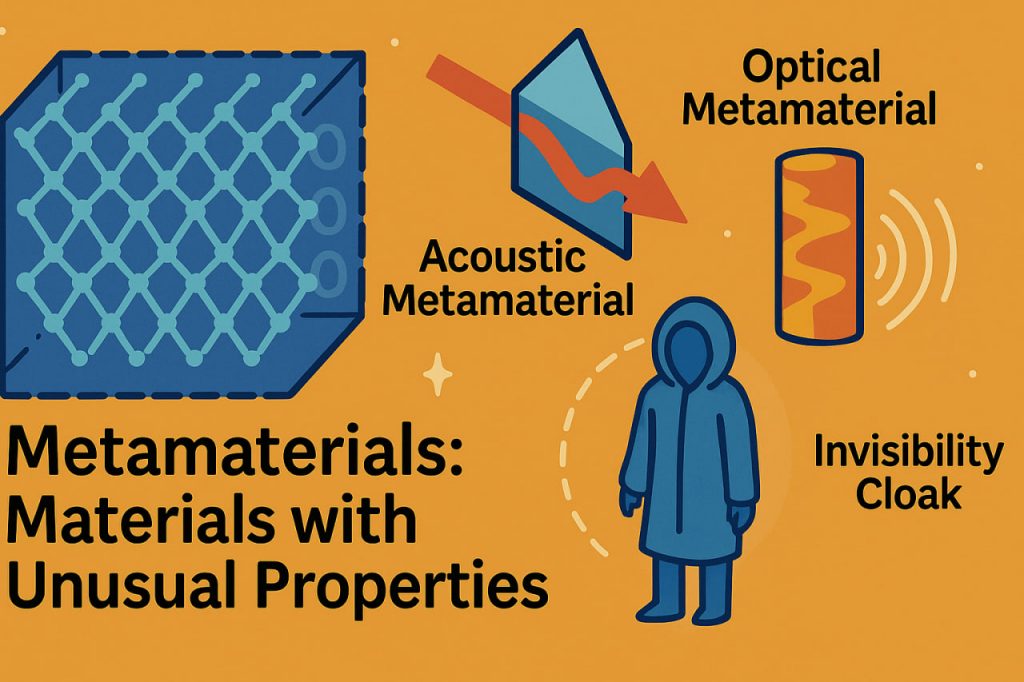Metamaterials are engineered substances designed to have properties not found in naturally occurring materials. Their unique characteristics arise not from their chemical composition, but from the precise arrangement of their internal structures on a microscopic or nanoscopic scale. These structures interact with waves — such as light, sound, or electromagnetic radiation — in ways that create extraordinary effects, from bending light backward to making objects appear invisible.
How Metamaterials Work
In natural materials, properties like refraction or conductivity depend on the atoms and molecules that compose them. In metamaterials, these properties are determined by repeating patterns that are smaller than the wavelength of the wave they interact with. By altering these patterns, scientists can control wave behavior in highly unusual ways.
Optical Metamaterials
One of the most famous applications is in optical metamaterials, which can manipulate light in unexpected ways. This includes negative refraction, where light bends in the opposite direction compared to normal materials. Such technology is a key step toward developing invisibility cloaks and ultra-efficient lenses.
Acoustic Metamaterials
Acoustic metamaterials control sound waves. They can be designed to block, absorb, or redirect sound in ways impossible for ordinary materials. Potential uses include soundproofing systems, medical ultrasound enhancements, and even earthquake protection by redirecting seismic waves.
Electromagnetic and Radio Wave Metamaterials
Metamaterials can manipulate electromagnetic waves for applications such as stealth technology, improving antenna performance, and boosting wireless communication signals. They can also create superlenses that surpass the diffraction limit, enabling imaging of details smaller than the wavelength of light used.
Emerging Applications
- Invisibility devices for military and privacy uses.
- Super-resolution imaging for medical and scientific purposes.
- Efficient energy harvesting from solar and electromagnetic sources.
- Vibration and noise control in engineering and architecture.
Challenges and Future Prospects
Metamaterials are still expensive and complex to manufacture, especially for large-scale applications. However, advances in nanofabrication and 3D printing are making them more practical. As production costs drop, metamaterials are expected to revolutionize optics, communications, energy, and defense technologies.
Glossary
- Metamaterial – An engineered material with properties determined by its internal structure rather than its composition.
- Negative refraction – The bending of light in the opposite direction to that observed in normal materials.
- Superlens – A lens capable of imaging objects smaller than the wavelength of light.
- Nanofabrication – The process of designing and manufacturing devices at the nanometer scale.
- Acoustic metamaterial – A metamaterial designed to control sound waves in unusual ways.


